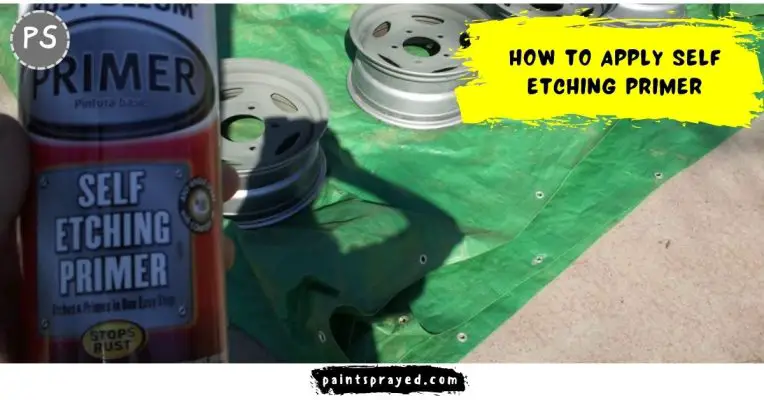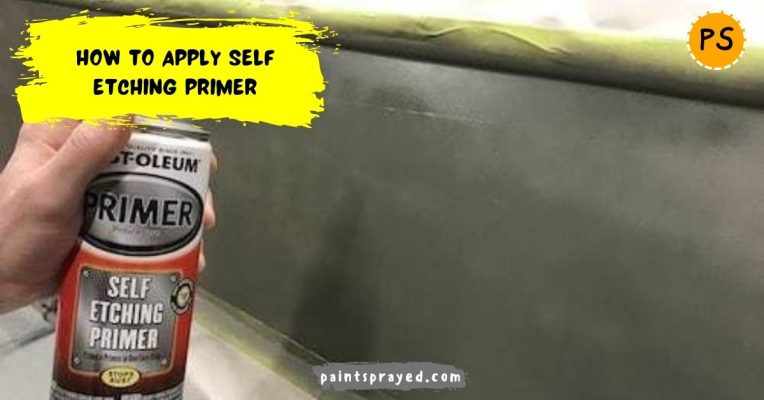This questions arises on every newbie in painting field so dont worry I have all the knowledge which you need.
This guide How to apply self ething primer covers all the surfaces which are mostly painted in the work.
So, dont miss any point because I am going to share my very own experience of years with you amateurs. I dont want you guys to make mistakes and mess the surface. Lets get started!
Wear Protective Gear
When using self-etching primer, it’s important to wear protective gear to ensure your safety. Here are some tips for wearing protective gear properly:
- Gloves: Wear disposable gloves to protect your skin from contact with the primer. Choose gloves made from a material that is resistant to chemicals.
- Eye protection: Wear goggles or safety glasses to protect your eyes from any splashes or fumes.
- Respirator: If the primer has strong fumes, it’s recommended to wear a respirator to protect your lungs. Make sure the respirator is properly fitted and approved for use with chemicals.
- Clothing: Wear clothing that covers your skin, such as a long-sleeved shirt and pants, to prevent skin exposure to the primer.
- Ventilation: Ensure the area is well-ventilated to help dissipate fumes and reduce exposure. Open windows, use fans, or wear a respirator with an air supply if necessary.
Remember to always follow the manufacturer’s instructions and safety precautions when using any chemical product.
How to apply self etching primer on metal?
To apply self-etching primer on metal, you will need to follow these steps:
- Clean the metal surface: Remove any dirt, grease, or rust from the metal using a degreaser and a wire brush. Rinse thoroughly and let dry completely.
- Prepare the primer: Shake the primer can well and make sure the nozzle is clear.
- Apply the primer: Hold the can about 8-10 inches from the metal and spray in a sweeping motion, covering the entire surface evenly. Apply multiple light coats, allowing each coat to dry before applying the next.
- Dry time: Allow the primer to dry completely according to the manufacturer’s instructions, usually between 15 to 30 minutes.
- Final steps: Once the primer is dry, you can sand it lightly if desired and then apply the topcoat of your choice.

How to apply self etching primer on Wood?
To apply self-etching primer on wood, you should follow these steps:
- Clean the wood surface: Sand the wood surface to remove any rough or loose material, then clean it thoroughly with a degreaser to remove any dirt, grease, or oil. Let the surface dry completely.
- Prepare the primer: Shake the primer can well and make sure the nozzle is clear.
- Apply the primer: Hold the can about 8-10 inches from the wood and spray in a sweeping motion, covering the entire surface evenly. Apply multiple light coats, allowing each coat to dry before applying the next.
- Dry time: Allow the primer to dry completely according to the manufacturer’s instructions, usually between 15 to 30 minutes.
- Final steps: Once the primer is dry, you can sand it lightly if desired and then apply the topcoat of your choice.
Note: Always wear gloves and eye protection when working with chemicals and follow the manufacturer’s instructions carefully.
How to apply self etching primer on Plastic?
To apply self-etching primer on plastic, you should follow these steps:
- Clean the plastic surface: Clean the plastic surface thoroughly with a degreaser to remove any dirt, grease, or oil. Let the surface dry completely.
- Prepare the primer: Shake the primer can well and make sure the nozzle is clear.
- Apply the primer: Hold the can about 8-10 inches from the plastic and spray in a sweeping motion, covering the entire surface evenly. Apply multiple light coats, allowing each coat to dry before applying the next.
- Dry time: Allow the primer to dry completely according to the manufacturer’s instructions, usually between 15 to 30 minutes.
- Final steps: Once the primer is dry, you can sand it lightly if desired and then apply the topcoat of your choice.
Note: Always wear gloves and eye protection when working with chemicals and follow the manufacturer’s instructions carefully.
Additionally, some plastic surfaces may not be suitable for self-etching primer.
So make sure to check the manufacturer’s recommendations for your specific plastic material before starting.
Tips to apply self etching primer
Here are some tips for applying self-etching primer:
- Clean the surface: Make sure the surface is clean, free of dirt, oil, and grease. Use a degreaser or isopropyl alcohol to clean the surface before applying the primer.
- Follow the manufacturer’s instructions: Read the manufacturer’s instructions carefully and follow them to ensure proper application and best results.
- Prepare the primer: Shake the can well and stir the primer to ensure it is mixed properly.
- Apply in thin, even coats: Apply the primer in thin, even coats, using a clean brush or spray can. Avoid applying too much primer in one area, as it may run or drip.
- Allow the primer to dry: Allow the primer to dry completely before applying paint or additional coats. The drying time will vary depending on the brand and the environmental conditions.
- Sand the surface: Lightly sand the surface with fine-grit sandpaper to remove any imperfections before applying the final finish.
- Safety precautions: Wear protective gear, such as gloves and eye protection, when applying self-etching primer. Ventilate the area well and avoid inhaling the fumes.

FAQ’s of How to apply self etching primer
Conclusion on How to apply self etching primer
Self etching primer is a crucial step in the automotive painting process. It acts as a foundation for the paint, helping to bond it to the metal surface and to prevent rust from forming.
To apply self etching primer, you need to follow a few simple steps. First, make sure the surface is clean and free from any grease, oil, or dirt.
Sand the surface with sandpaper to create a rough surface for the primer to adhere to. Then, shake the primer well and apply it using a spray gun or a brush.
Apply in light, even coats, taking care not to overload the surface with too much primer. Let the primer dry completely between coats, following the manufacturer’s recommended drying time.
Finally, after the final coat has dried, sand the surface again to ensure an even surface for the paint to adhere to.
By following these steps, you can achieve a high-quality, durable finish that will last for years to come.
Self etching primer is an essential component of any painting project, and it is important to understand how to apply it properly in order to achieve the best results.

Matthew Edward is a professional painter who loves to paint and wants to share useful tips and tricks which he had learned in many years of experience in painting. He also used many products that can be used for painting he has tried and tested each and every product to give an unbias opinion about it in his review. This blog is very useful for those newbies who want to learn painting without making mistakes.







